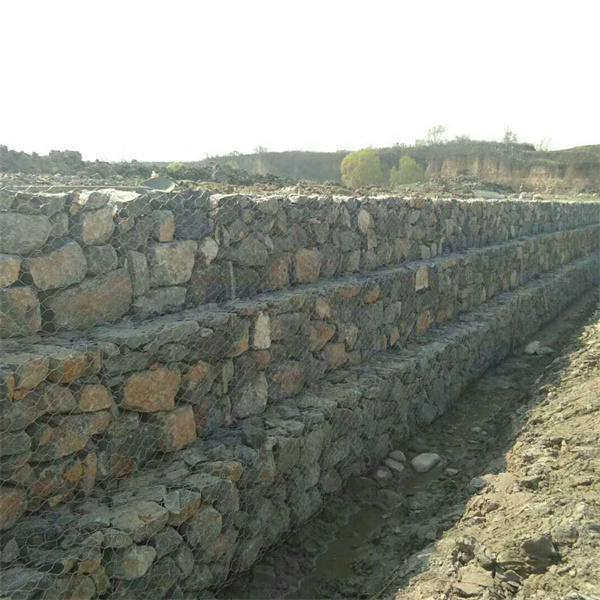dets. . 03, 2024 16:29 Back to list
Exploring the Aesthetic Appeal of Gabion Textures in Modern Design
The Allure of Gabion Textures A Harmonious Blend of Nature and Design
Gabions, often recognized for their practical applications in landscaping and civil engineering, are more than just functional structures; they present a unique aesthetic appeal that brings texture, depth, and natural beauty to any setting. The texture of gabions, formed by steel cages filled with stones, rock, or other materials, creates a distinct visual language that complements both natural and urban environments. In this article, we will explore the multifaceted nature of gabion textures, their applications, and the artistic potential they hold.
Understanding Gabion Textures
At the core of gabion design lies the texture created by the interplay of the woven wire mesh and the filling materials. The mesh itself typically has a rugged, industrial feel, often galvanized or coated to prevent rust and wear. When filled with an array of stones, pebbles, or even recycled materials, the resulting textures can vary significantly. The choice of fill material can influence the overall aesthetics; smooth river stones will give a softer, more organic vibe, while rough, angular rocks exude a more robust and rugged appearance.
The tactile experience of gabions is just as important as their visual appeal. The varying sizes, shapes, and colors of the stones create a rich, tactile surface that invites touch and interaction. This aspect of gabion textures can be harnessed in various applications, from decorative garden walls to functional noise barriers, offering both visual and sensory stimulation.
Architectural and Landscaping Applications
Gabions have gained popularity in both architectural and landscaping projects due to their versatility and unique textures. In landscape architecture, gabion walls can serve as retaining structures, providing both stability and an organic aesthetic that blends seamlessly with the surrounding nature. Their rough, textured surfaces contrast beautifully with soft plantings, creating dynamic landscapes that are anything but monotonous.
gabion texture

Architecturally, gabions can define spaces and add structures that evoke a sense of permanence and durability. They can be employed as seating areas, garden pathways, or even art installations. When designed with careful attention to the textures of the materials used, gabion structures can transform a simple outdoor area into an engaging space that encourages exploration and interaction.
Furthermore, the ecological benefits of using gabions should not be overlooked. The gaps between the stones allow for drainage, reducing the risk of erosion while promoting local biodiversity. By incorporating natural materials, gabions can enhance the surrounding landscape, attracting wildlife and contributing to an ecosystem that thrives on variety and resilience.
The Artistic Potential of Gabion Textures
Beyond practicality, gabion textures offer incredible artistic potential. Designers and artists are beginning to experiment with gabion structures as canvases for public art installations. By customizing the fill materials and mesh design, creators can tell stories or evoke emotions through unique patterns and arrangements. Imagine a colorful mosaic of glass or ceramic pieces encased in a gabion structure, shimmering in the sunlight and reflecting the surrounding environment.
Additionally, the varying textures of gabions can serve as an inspiration for interior design. The ruggedness of gabion walls can be replicated in home décor, creating a connection to nature within urban living spaces. Textiles, wall coverings, and accessories that mimic the earthy tones and natural textures of gabions can enhance the warmth and authenticity of a space.
Conclusion
Gabion textures embody a perfect fusion of function and art, offering endless possibilities for both practical applications and creative expression. As landscaping and architectural trends increasingly prioritize sustainability and natural aesthetics, gabions provide a compelling option that marries utility with beauty. Whether used to create stunning outdoor installations or as artistic elements within urban landscapes, the textures of gabions invite us to engage with our environments in new and meaningful ways. Embracing the allure of gabion textures allows us to forge a deeper connection with nature, inspiring innovative design that resonates with the world around us.
-
The Role of Galvanized Gabion Mesh in Riverbank Protection
NewsJun.26,2025
-
The Role of Gabion Basket Raised Bed in Sustainable Gardening
NewsJun.26,2025
-
Quality Assurance of Wire Mesh Gabion Baskets
NewsJun.26,2025
-
Installation Guide for Welded Gabion Box
NewsJun.26,2025
-
How to Choose the Right Gabion Box
NewsJun.26,2025
-
Different Types of Gabion Wire Mesh
NewsJun.26,2025
-
Why PVC Coated Gabion Mattress Is the Best Solution for Long-Term Erosion Control
NewsMay.23,2025






